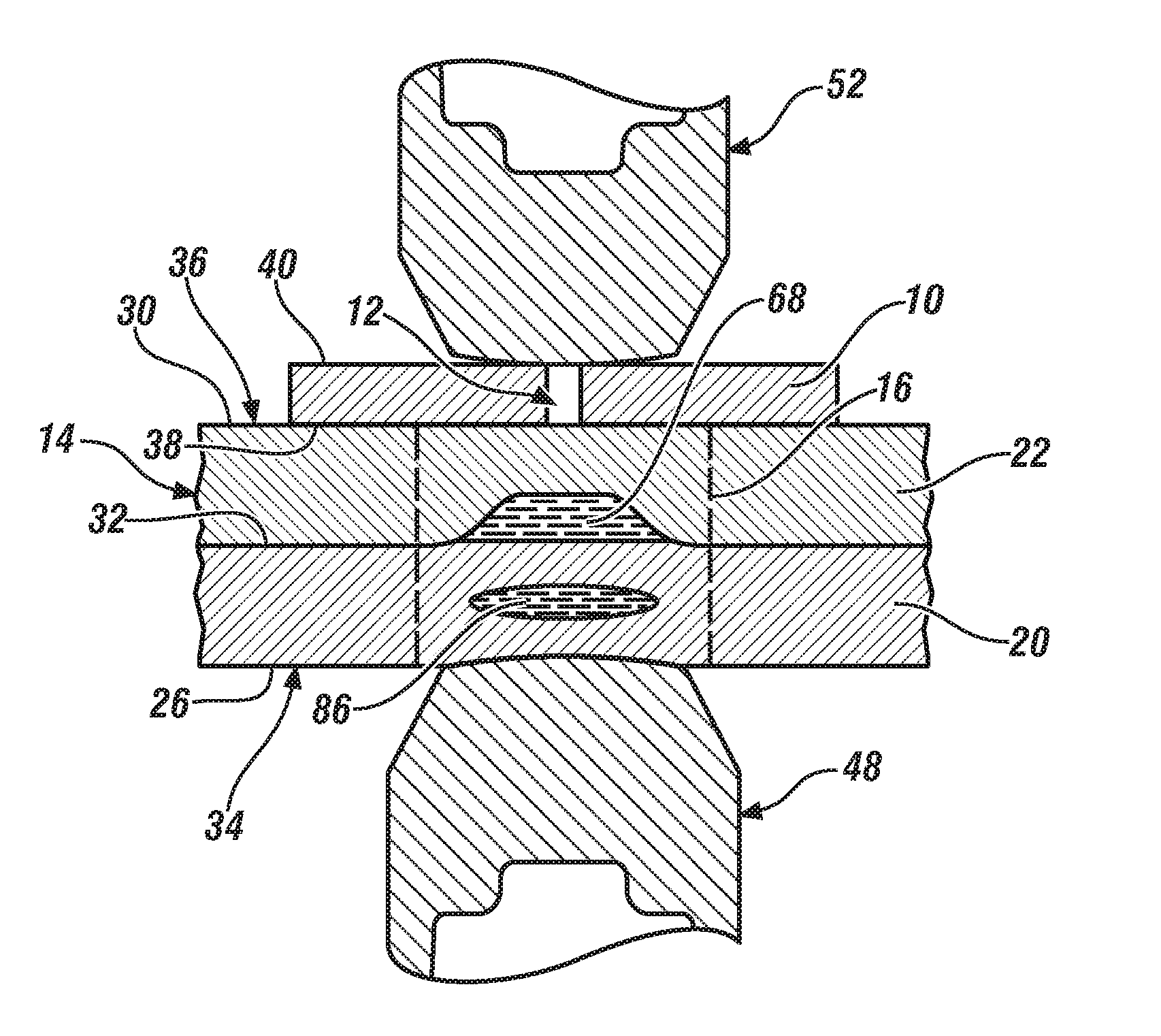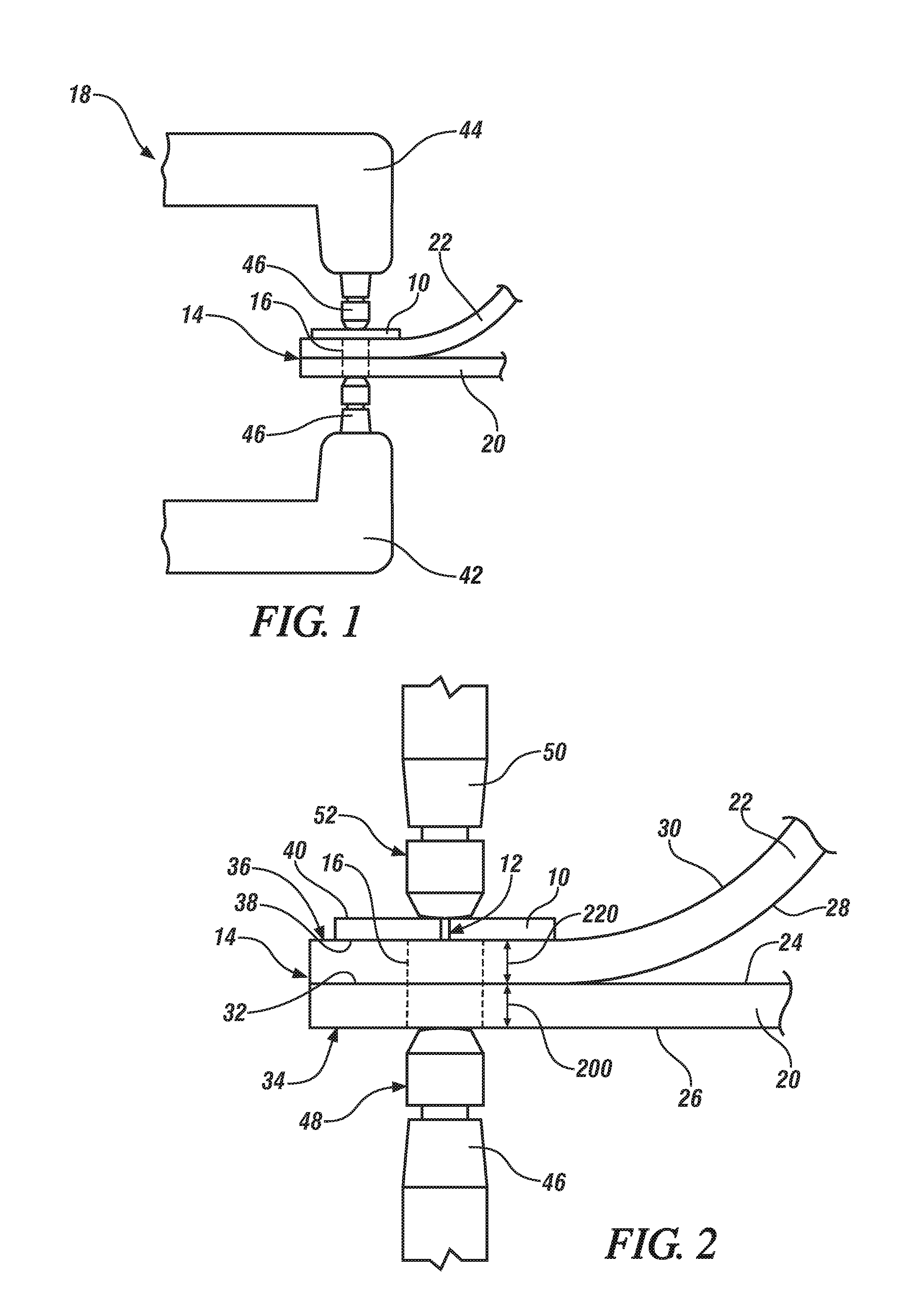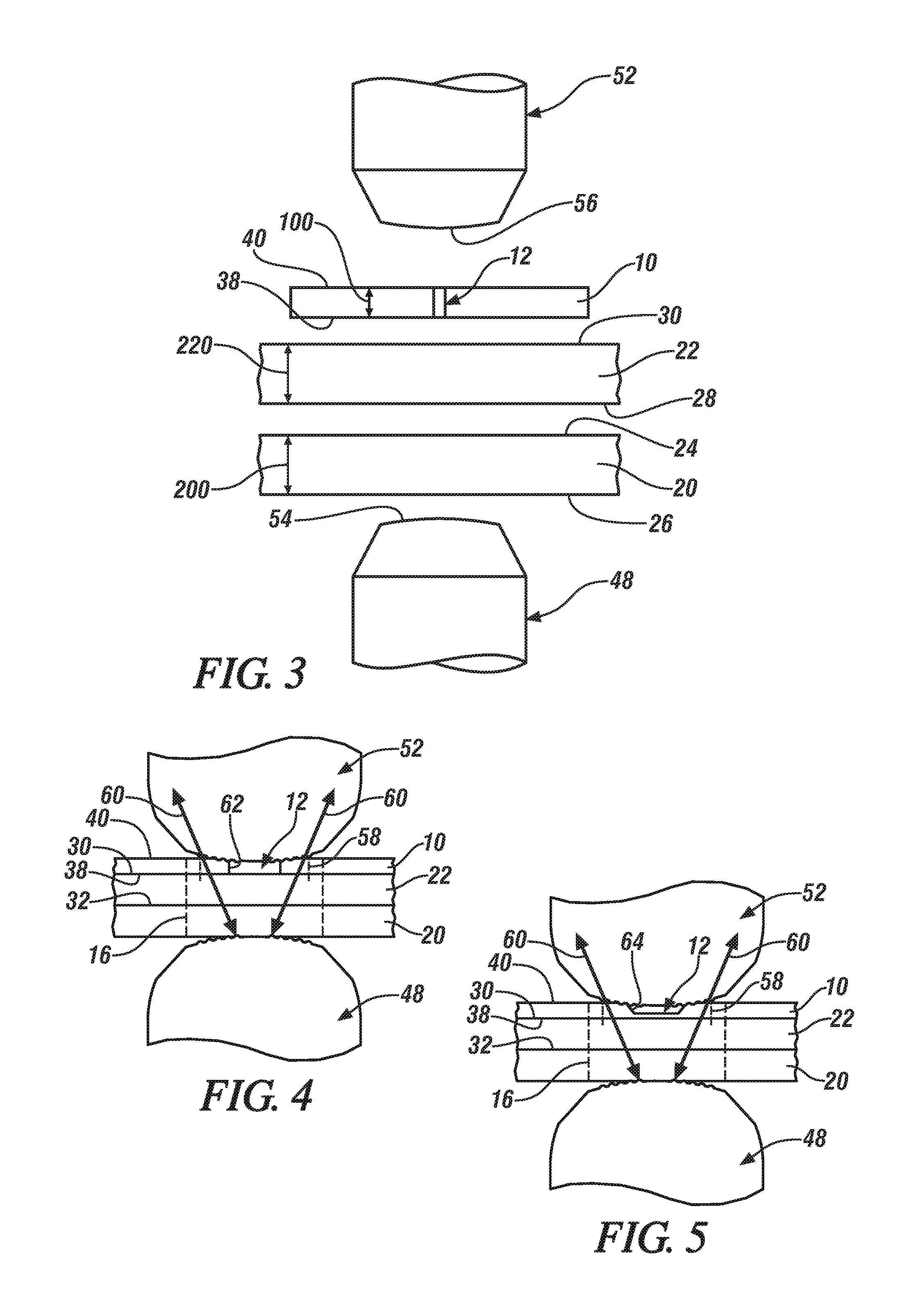Cover plate with intruding feature to improve al-steel spot welding
- Summary
- Abstract
- Description
- Claims
- Application Information
AI Technical Summary
Benefits of technology
Problems solved by technology
Method used
Image
Examples
Embodiment Construction
[0028]Preferred and exemplary embodiments of a method of spot welding a workpiece stack-up that includes a steel workpiece and an adjacent aluminum alloy workpiece are shown in FIGS. 1-15 and described below. The described embodiments use a cover plate 10 that includes an intruding feature 12. The cover plate 10 is located adjacent to an aluminum alloy workpiece on one side of the workpiece stack-up between a welding electrode and the workpiece stack-up so as to affect the flow pattern and density of the electrical current that passes through the several overlapping workpieces. Additionally, in some instances, the cover plate 10 provides a medium on the side of the workpiece-stack up between and the aluminum alloy workpiece that lies adjacent to the steel workpiece and the welding electrode that confronts that particular side of the stack-up. In this way, the cover plate 10 can generate heat during current flow and retain heat for a longer duration than the aluminum alloy workpiece ...
PUM
| Property | Measurement | Unit |
|---|---|---|
| Fraction | aaaaa | aaaaa |
| Fraction | aaaaa | aaaaa |
| Thickness | aaaaa | aaaaa |
Abstract
Description
Claims
Application Information
 Login to View More
Login to View More - R&D
- Intellectual Property
- Life Sciences
- Materials
- Tech Scout
- Unparalleled Data Quality
- Higher Quality Content
- 60% Fewer Hallucinations
Browse by: Latest US Patents, China's latest patents, Technical Efficacy Thesaurus, Application Domain, Technology Topic, Popular Technical Reports.
© 2025 PatSnap. All rights reserved.Legal|Privacy policy|Modern Slavery Act Transparency Statement|Sitemap|About US| Contact US: help@patsnap.com



